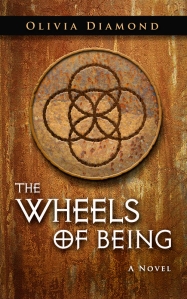Of the books I read in 2015, Winter’s Tale by Mark Helprin stands out above the rest. After I finished my first reading, I immediately had to read it again. I am sure I will read it several times more before I loosen this mortal coil.
This is an astounding mystical, magical, metaphorical, and historical journey into the American ethos. Helprin liberally draws from the world’s mythologies–Greek, Celtic, Native-American, Biblical, Arthurian–and invents his own. He creates a marvelously centered world of fantastical and historical New York City–the hub, drawing like a magnet pairs of characters from upper New York State, the Jersey coast, Ireland, and San Francisco. The mythical white horse conveys Peter Lake to eternity. There is such a constellation of motifs and interconnections in this voluminous novel of 800-pages that it encompasses not only New York City but the universe. A flying horse and time travel exist alongside tuberculosis and street gangs of the early twentieth century. I predict that this novel will endure well beyond the twenty-second century and stand as the monumental work of American magical realism.
Ultimately, what is the book about? Everything. If I have to identify one over-riding theme, it would be justice and the search for justice. The characters are moving toward a vision of justice, at least Hardesty Maratta’s pilgrimage represents such a quest. The perception of justice requires that the mind move out of time, in fact, reach a timeless realm in which past, present, and future coalesce. Judgments are shaped by past experiences and limited perceptions. In order to perceive correctly, one must be able to perceive all times and all places. Indeed, Helprin strives to create a timeless realm in Winter’s Tale.
Many literary echoes occur in this novel. Dante’s journey comes to mind. Walt Whitman and Hart Crane reverberate, particularly in Helprin’s development of the bridge motif. Hardesty Maratta searches for the designer of the Golden Gate Bridge. Jackson Mead is obsessed with constructing an equally majestic bridge in New York. There are four gates to New York. “The east gate was that of acceptance of responsibility, the south gate that of the desire to explore, the west gate that devotion of beauty, and the north gate that of selfless love.” Virginia Gamely journeys toward the city from the north, Hardesty from the west; Peter Lake from the south, and Asbury Gunwillow from the east. The characters converge and form pairs in the city. Present, past, and future merge. Hardesty reenacts Peter Lake’s life, and the ascendant Peter Lake re-discovers who he was a hundred years ago. Abby is a reincarnation of the poor, dying child Peter Lake saw in the tenement hallway when he first came to New York in about 1913. Peter finds his “celestial home” again in the room above Grand Central Station that he occupied in the past. The actual astronomical, zodiacal painting on the ceiling of the large concourse attempts to replicate a medieval drawing of the constellations from God’s viewpoint above the stars. Grand Central Station was built from 1903-1913, so it would have been newly completed in the pre-World War I era when Peter Lake arrives in Manhattan. Justice, then, resides in the timeless, all-seeing realm of eternity, and finally, is beyond the ken of time and space-bound humanity.
The pattern of falling and arising in the characters’ lives parallel each other. Cold–the winter–creates the ambience in which everything congeals, in which the whiteness creates a clarity and lightness not otherwise available. Eventually, the city freezes over; the population skate across the river. Time freezes also. All eras become one. Everything congeals in winter as everything converges in the city where both the poor and the wealthy exist in a balance, for each is necessary to the other. Crime exists side by side with altruism. Both angels and saints populate the city. Winter furnishes the backdrop for the theme, implying after the deep freeze, the city will be reborn and renewed. Helprin writes: “Winter, it was said, was the season in which time was superconductive–the season when a brittle world might shatter in the face of astonishing events, later to reform in a new body as solid and smooth as transparent ice.”
The plot and subplots are many-layered and it is not my purpose here to summarize even the main plot line. What I wish to do is to praise the richness of imagination embedded in the book. Obviously, Helprin is widely-read in world literature and dips into that heritage as well as into American history. This book is not for the faint-hearted. As with all challenges, it will reward the reader beyond his wildest dreams. This is a philosophical fantasy like no other.
